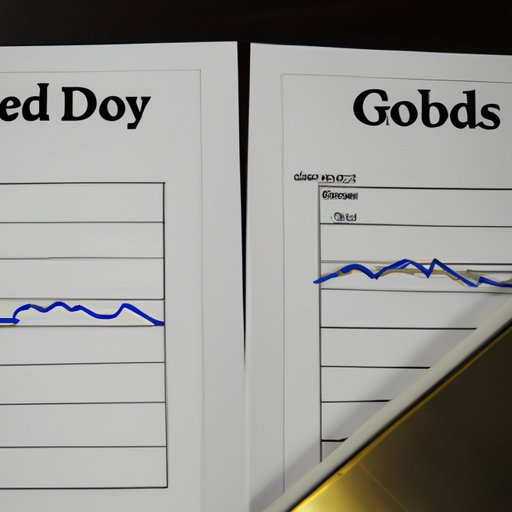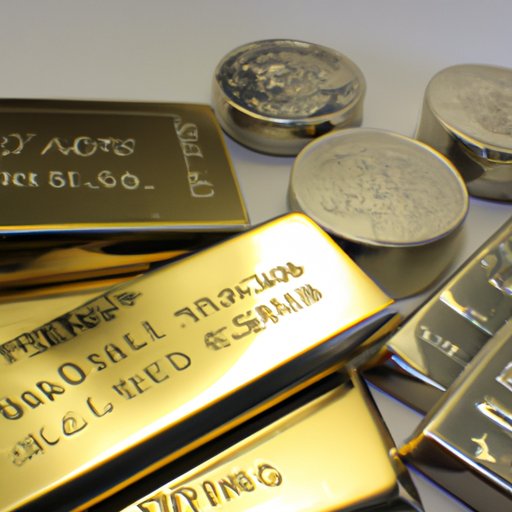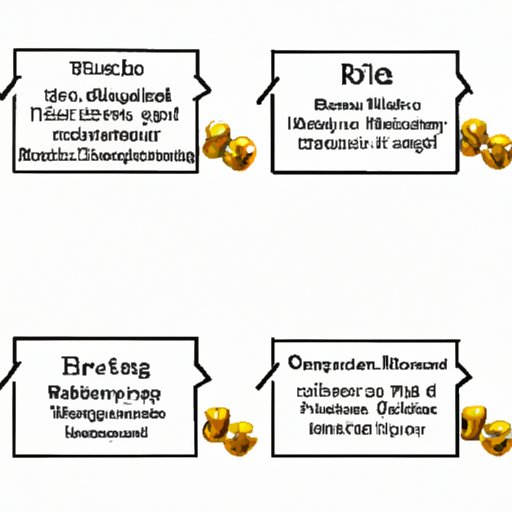Introduction
Gold and silver have long been considered a safe haven for investors seeking to diversify their portfolios and hedge against economic instability. With the increasing popularity of precious metals as an investment, it’s important to consider the pros and cons before committing your funds. This article aims to provide a comprehensive guide to investing in gold and silver, examining the advantages and disadvantages, as well as the risks and rewards associated with this type of investment.

Analyzing the Pros and Cons of Investing in Gold and Silver
When considering whether or not to invest in gold and silver, there are several factors to take into account. The most important of these is understanding the advantages and disadvantages of each metal.
Advantages of Investing in Gold and Silver
The primary advantage of investing in gold and silver is the potential for capital gains. Precious metals tend to hold their value over time, meaning that your investments will remain relatively stable regardless of economic conditions. Additionally, gold and silver can be used as a hedge against inflation, as the prices of both metals typically increase when the value of traditional currencies fall.
Disadvantages of Investing in Gold and Silver
One of the main drawbacks of investing in gold and silver is the volatility of the market. Prices can fluctuate significantly over short periods of time, making it difficult to predict the future performance of these metals. Additionally, storage and insurance costs can add up quickly, particularly if you’re investing in physical gold and silver. Finally, it’s important to note that gold and silver are not liquid assets, meaning they cannot be easily converted into cash.
A Beginner’s Guide to Investing in Gold and Silver
If you’ve decided to invest in gold and silver, the first step is deciding how much you want to invest. It’s important to keep in mind that these metals are typically seen as a long-term investment, so it’s best to start small and gradually increase your holdings over time. Once you’ve determined your budget, you can decide what type of gold or silver to invest in. Popular options include bullion coins and bars, exchange-traded funds (ETFs), and futures contracts. You should also research reliable dealers who can help you purchase the gold or silver you need.

Exploring the Benefits of Investing in Gold and Silver
Investing in gold and silver offers a number of benefits, including hedging against inflation and the potential for capital gains. When the value of traditional currencies falls, the price of gold and silver tends to increase, making them a good way to protect your wealth during times of economic uncertainty. Additionally, investing in gold and silver can provide a good return on investment over the long term, as the prices of these metals tend to rise steadily over time.

The Risks Involved When Investing in Gold and Silver
It’s important to remember that there are risks involved when investing in gold and silver. As previously mentioned, the prices of these metals can be volatile, meaning that your investments may not perform as expected. Additionally, you may incur storage and insurance costs if you choose to purchase physical gold and silver. It’s also important to note that gold and silver are not liquid assets, meaning they cannot be easily converted into cash.
Tax Implications of Investing in Gold and Silver
The tax implications of investing in gold and silver should also be taken into consideration. Any gains from the sale of these metals are subject to taxation, and you must report any gains on your annual tax return. Additionally, some countries may impose additional taxes on investments in gold and silver, so it’s important to research the laws in your jurisdiction before investing.
Comparing the Return on Investment for Gold and Silver
When considering the return on investment for gold and silver, it’s important to look at both the historical performance and the potential for diversification benefits. Historically, gold and silver have proven to be reliable investments, offering consistent returns over the long term. Additionally, investing in both metals can help to diversify your portfolio, reducing the risk of losses due to fluctuations in the market.
Conclusion
Investing in gold and silver can offer a number of advantages, including hedging against inflation and the potential for capital gains. However, it’s important to understand the risks involved, such as the volatility of prices and the costs associated with storing and insuring physical gold and silver. Before investing, it’s important to consider the tax implications and compare the return on investment for gold and silver. Ultimately, investing in gold and silver can be a smart move for those looking to diversify their portfolios and protect their wealth in times of economic uncertainty.
(Note: Is this article not meeting your expectations? Do you have knowledge or insights to share? Unlock new opportunities and expand your reach by joining our authors team. Click Registration to join us and share your expertise with our readers.)
